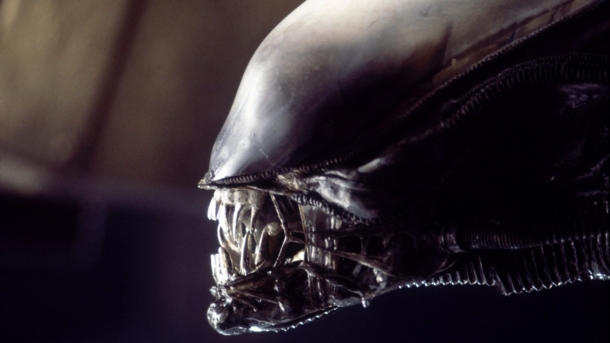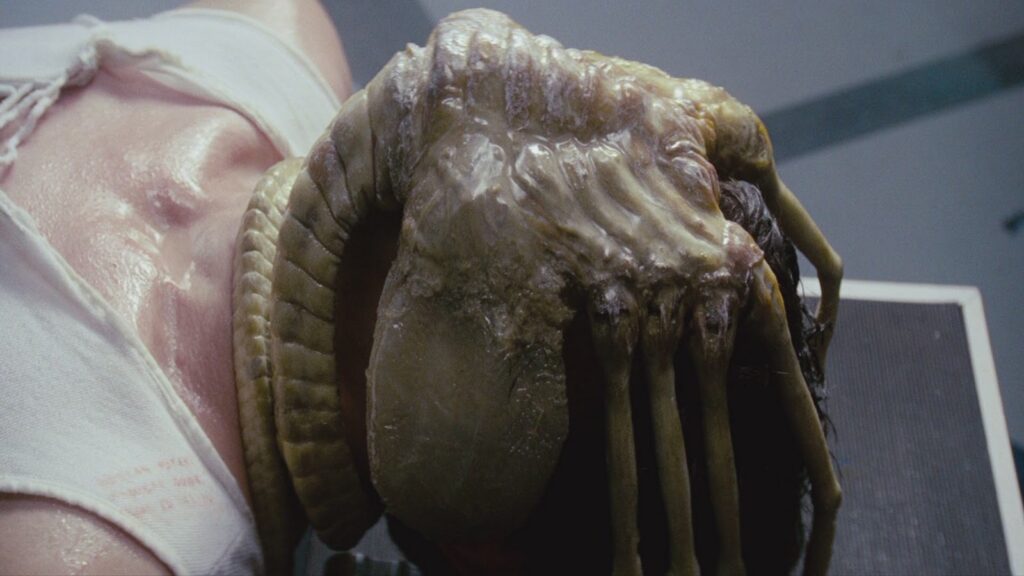
It’s hardly an understatement to say that H.R. Giger, who died on Monday at the age of 74, permanently altered the way Hollywood depicts aliens. When his frightening and singular extraterrestrial debuted in Ridley Scott’s 1979 film Alien, mainstream audiences had frankly never seen anything like it. Having pioneered a biomechanical style that infused robotic elements into his representation of biological organisms, Giger hit upon a truly original style that has continued to keep movie fans up at night thirty-five years after his creation first hit the screen.
Simply put, Giger created the first extraterrestrial that looked positively alien. After all, who can ever forget his creation’s mouth within a mouth moving Sigourney Weaver’s Ripley to terrified tears? From the metallic sheen of its over-exaggerated forehead to its sleek to its skeletal body—with what looked like steam valves protruding from its spring—and limber legs and threateningly ribbed tail, Giger fused together natural and mechanical motifs to create a creature that looked positively other. While his alien creation—also known as a “xenomorph”—became his calling card, Giger is also credited with creating the film’s “facehugger” and “chestburster”, embryonic versions of the xenomorph that emphasized the biological influences on his work.

Though aliens have had a presence throughout the history of sci-fi, before Giger, aliens were often exaggerations of the human form with actors dressed in absurd make-up and costumes that often looked downright goofy. After all, the modern viewer will often be moved to laughter when viewing the creations of such schlock masters as Roger Corman or the aliens that plagued Doctor Who. But Giger’s alien is unlikely to elicit even a giggle from the most veteran sci-fi fan, a creature so terrifyingly original that it helped to spawn three sequels of diminishing quality and a prequel, Prometheus, that is essentially an exploration of Giger’s mind and aesthetic.
Once Alien entered the popular consciousness and helped to win Giger and his colleagues an Oscar for Best Achievement for Visual Effects in 1980, extraterrestrials on the big screen started to look nastier, more menacing, and truly otherworldly. Even though the adorable Wookies are often what first come to one’s mind when thinking of 1983’s Return of the Jedi, Giger’s influence can be seen in such terrifying creations as the Sarlacc, the sand pit beast that gleefully swallows its victims down its spikey opening. The height of Giger’s influence can arguably best be seen in Predator, whose titular creature fused human-like dreadlocks and reptilian mandibles with a technologically advanced creature that looked equal parts alien and machine. It only seemed a matter of fate that both creatures would face off countless times in comic books and movies like Alien vs. Predator.
To this day, Giger’s biomechanical vision of extra-terrestrial life continues to permeate popular culture, be it the aliens in movies such as The Avengers and Transformers to the cyberpunk creations of William Gibson to characters in countless graphic novels and comic books. While Giger was a true artist who created an extensive pantheon of paintings, movies, album covers, and works of interior design, when it comes to Hollywood and its many aliens, his influence is likely to be felt for decades to come.